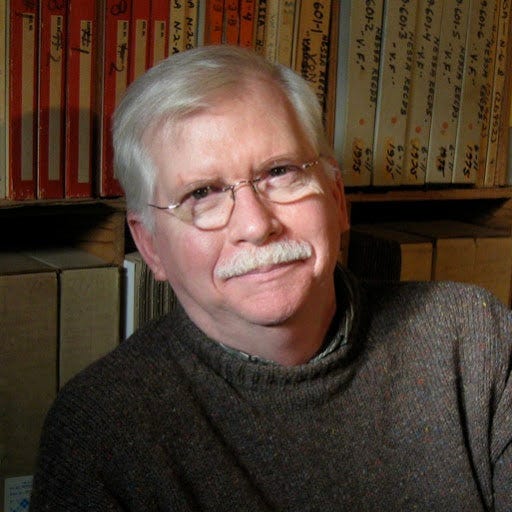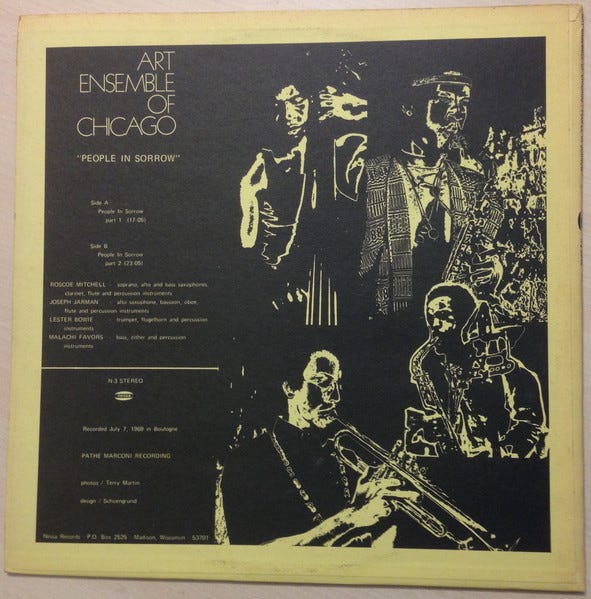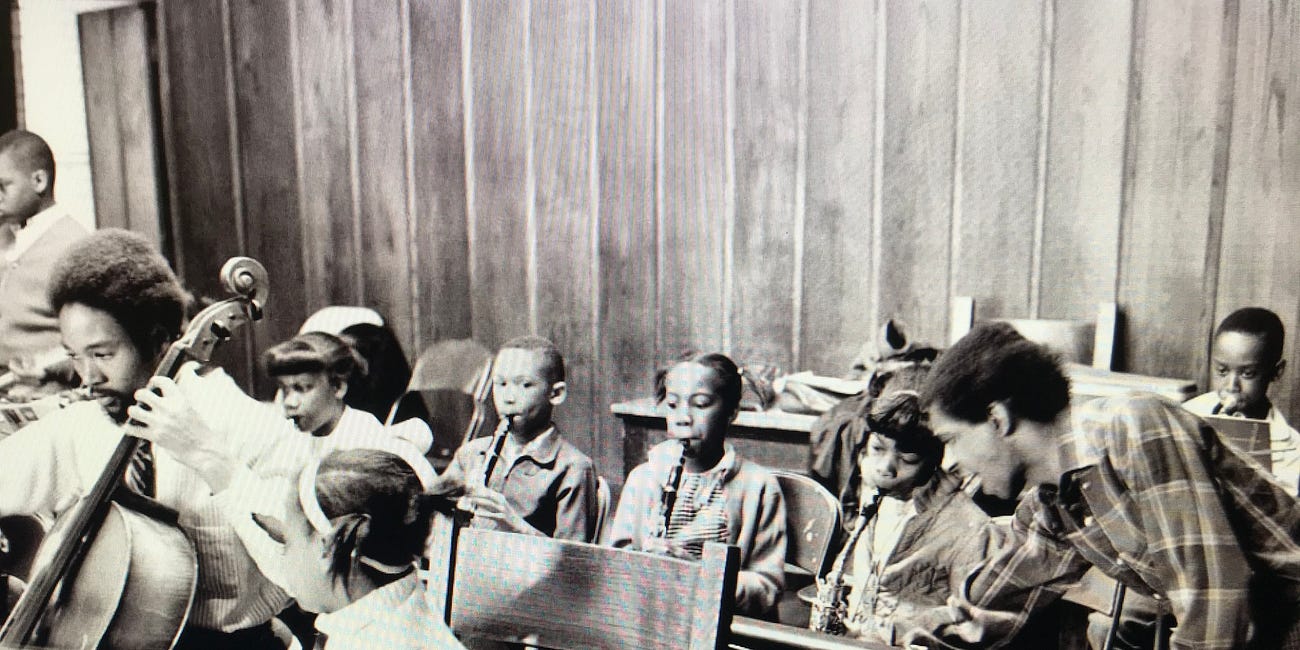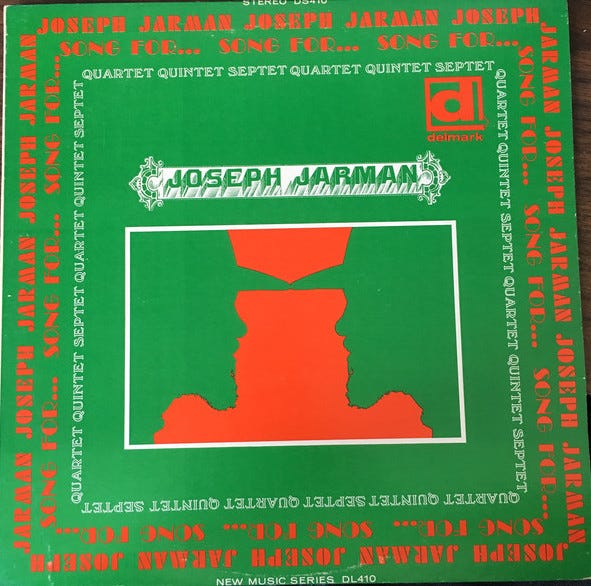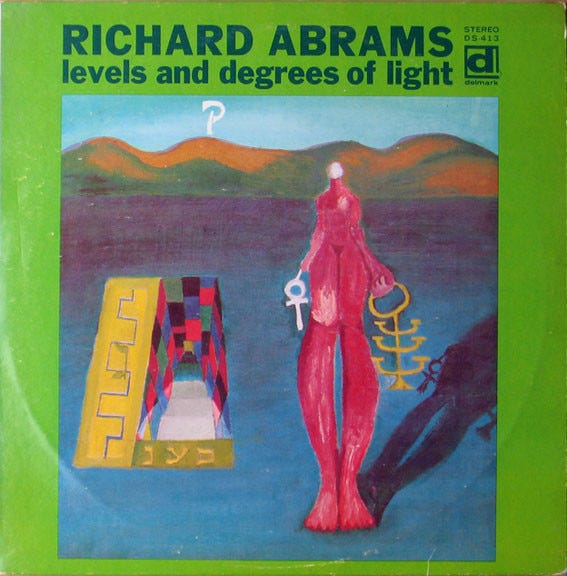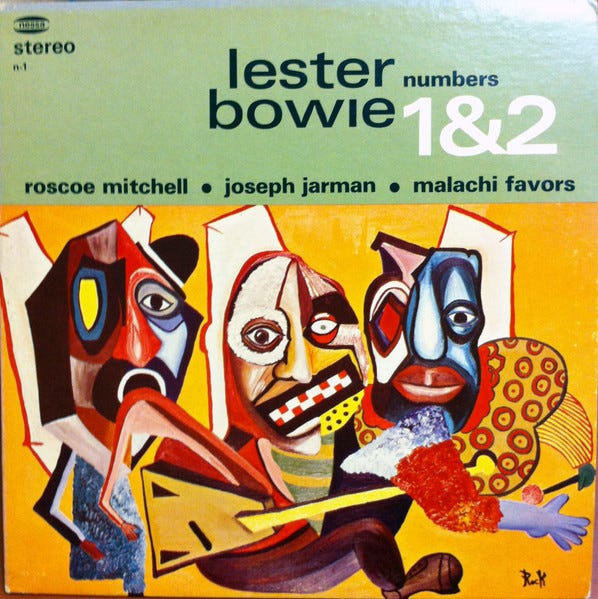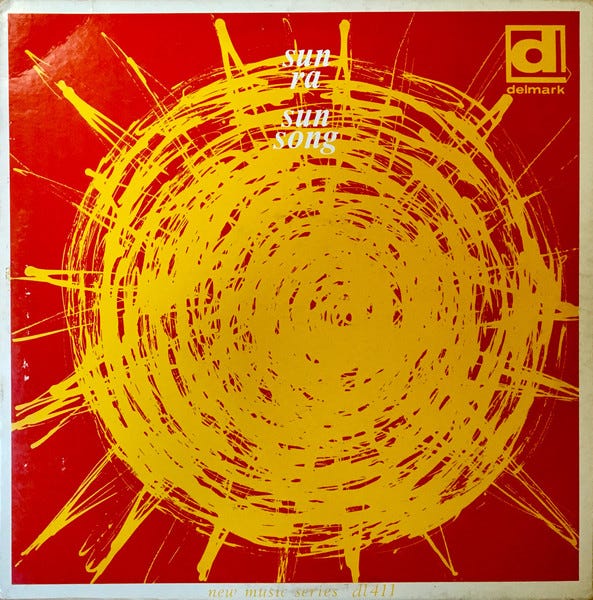In the case of the AACM, we have an art form that is diverse, and in many aspects, unique; it has influenced not only jazz but art music in the Western world, and the proliferation of this influence is a byproduct of recordings.
- Chuck Nessa
In the early 1990s, Lester Bowie told me to look up People In Sorrow, an album he was particularly fond of. I had met Lester at a show in Oakland, where his Brass Fantasy was playing. Soon after, I found the album at Amoeba Music in Berkeley - the Jazz Gods were smiling at me as I realize now it was nearly impossible to find it. Here is that copy:
At the time I bought that album, I did not know anything about it. I also knew nothing about Nessa Records and very little about the Art Ensemble of Chicago. I was only aware of Lester Bowie’s Brass Fantasy through hearing his terrific version of I Only Have Eyes for You from his 1985 ECM album of the same name. You can read more about Lester Bowie here:
In the Fall of 1968, a group of Chicago AACM musicians traveled to Paris. The ensemble consisted of Lester Bowie, Roscoe Mitchell, Joseph Jarman, and Malachi Favors. While in Paris, they adopted the name the Art Ensemble of Chicago, and it stuck. On July 7, 1969, they recorded People In Sorrow in Boulogne on the Pathé Marconi label. Shortly thereafter, Pathé Marconi contacted the newly formed Nessa Records in Chicago, who released People Of Sorrow in America in 1971. It was Nessa Records’ third release.
I loved People In Sorrow from the first time I played it, and it remains to this day one of my favorite jazz albums. I remember thinking curiously the first time I played it, “What is this Nessa Records?”
Nessa Records was founded in 1967 in Chicago by Chuck Nessa. He grew up on a farm in central Iowa, about 15 miles from Ames, where they grew corn and soybeans and raised pigs. He attended Iowa University as an English major, but when I asked him how he became interested in music, he told me:
“I went to Iowa as an English major but was quickly drawn into the music scene. There was a club in Cedar Rapids that occasionally had name people, and around 1963, JR Monterose played there for a couple of months and then moved to Iowa City. A bar there named "Little Bills" provided a home base for JR, and his quartet played there almost every night for a couple of years. My friends Dale Oehler (piano), John Wilmeth (bass and trumpet), and Rusty Jones (drums) were the rest of the band. During that period, Al Jarreau was in graduate school, and around 1965, Dave Sanborn transferred to Iowa. I should also mention Eldon Obrecht, my music appreciation teacher. He was a wonderful man and spent some personal time with me.”
During those years in Iowa City, Nessa had been visiting Chicago regularly for the music scene and always went to Bob Koester’s Jazz Record Mart.
When the Jazz Record Mart’s long-time store manager Peter Brown was moving back to England, Koester offered Nessa the job. He recalls,
“I accepted the job managing the Jazz Record Mart with the understanding I could sign three musicians to recording contracts. We moved to Chicago (from Iowa City) in April, and I immediately started searching out live music. Some gig reviews in Down Beat alerted me to the AACM, and the first concert I could attend was Roscoe's sextet. I tracked him down after the event and invited him to come discuss recording. Within a day or two, I met with Roscoe and Muhal Richard Abrams and we came to an agreement. About a month later we were in the studio. The other musicians I signed to Delmark were Joseph Jarman and Muhal.” That signing led to three great Delmark albums and historic jazz documents.
In August 1966, at Sound Studios in Chicago, Nessa recorded Sound, his first Delmark album:
You can read more about Sound and the formation of the AACM here:
Nessa recalls the Sound record date, “August 10, 1966. Alto sax, trumpet, trombone, tenor, sax, bass, drums, cello, harmonica, alto recorder, and fruit juice cans filled with water - all causing recording engineers to worry. Six very confident young musicians go about the business of recording Roscoe Mitchell’s Sound, the first AACM music recorded for commercial consumption.”
Nessa’s second Delmark recording was Joseph Jarman’s Song For, recorded in October and December 1966, again at Sound Studios in Chicago:
The third Delmark album, recorded in June and December of 1967 at Sound Studios in Chicago, is Muhal Richard Abrams’ Levels and Degrees of Light:
Although Nessa set up this recording session and attended as Muhal’s guest, by then, he had left Delmark.
Shortly after this Abrams date, on August 11 and 25, 1967, Nessa made a recording at Sound Studios of Roscoe Mitchell and his quartet, which became the basis for starting his own record company. Nessa told me, “Roscoe was under contract to Delmark so we decided to put Lester’s name on the record. When we went in the studio I had plans to sell the master to Delmark as Roscoe’s next release, but Bob freaked out so I issued it.”
So, at the urging of Mitchell and Bowie, he founded Nessa Records and released Numbers 1 & 2:
This marks the start of one of America’s great Jazz labels and true treasures of American art.
Nessa’s second release was the Roscoe Mitchell Art Ensemble’s Conglipitous, recorded at Ter-Mar on March 4 and 11, 1968. Incidentally, Ter-Mar was founded during the 1950s by Chess' founders Phil Chess and Leonard Chess and named after their sons Terry and Marshall Chess.
That fall, Mitchell’s group, now with Joseph Jarman rather than drummer Robert Crowder, headed to Paris and soon recorded People in Sorrow, and the rest is history….
As it turns out, Chuck Nessa was also instrumental in convincing Koester to buy the Transition Sun Ra tapes that in 1967 produced Delmark’s Sun Song:
He explained to me, “Bob had already purchased a Donald Byrd from the defunct Transition label, and I convinced him to buy the Ra tapes. I also got him to snag the Shepp / NYC5 from Sonet.”
Nessa Records played, and continues to play, a crucial role in documenting early AACM art. For this, we all owe him a huge debt of gratitude. Chuck Nessa’s Delmark and his own Nessa releases are landmarks and worthy of celebrating each year during Black Music Month.
Nessa Records is still very active and after many years in Michigan, Chuck Nessa now lives and operates Nessa Records in Buffalo, New York, where he moved in 2018 to be near his grandkids.
Here’s one more for the road. As it turns out, Louis Armstrong & His Hot Five and Hot Seven records fascinated the young Chuck Nessa back in Iowa. He told me, “I probably started dreaming of producing recordings in high school. The Armstrong Hot 5s & 7s on Columbia fascinated me. I kept thinking these were recorded over 30 years earlier and because someone made that happen, I could enjoy them! It seemed like magic.”
One of Nessa’s favorite Louis Armstrong classics is the Hot Five’s Struttin’ With Some Barbecue:
Yes, Chuck, with your Nessa Records, you have created magic of your own!
Incidentally, I just ordered Roscoe Mitchell’s Ride The Wind (2018) and Art Ensemble - Early Combinations from Nessa. Please take some time to browse their catalog and pick up a couple of items - at the very least, pick up the cool T-shirt, which I’m wearing right now.
Next week on that Big River called Jazz, we’ll step back in time and dig our paddles in and explore the waters of the great Fats Waller.
If you like what you’ve been reading and hearing so far on our journey and would like to share this with someone you think might be interested in learning more about our great American art form: Jazz, just hit the “Share” button at the bottom of the page. Also, if you feel so inclined, become a subscriber to my journey by hitting the “Subscribe” button here:
Also, find my playlist on Spotify: From Fred Astaire to Sun Ra.
Feel free to contact me at any time to talk shop. I welcome and encourage that.
Until then, keep on walking….




